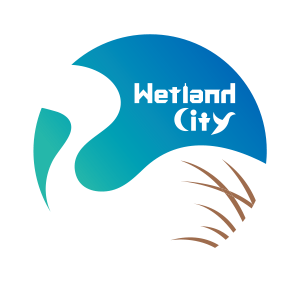
Yinchuan
Home > Yinchuan
Yinchuan has a long history and rich cultural heritage, and is a national historic and cultural city with a history of over 2,100 years. It was formerly known as “Xingqing Palace” and also called “Phoenix City”. It is also an important hub city of the Belt and Road Initiative and an important window for China’s opening-up to the West. It is the permanent venue of the China-Arab Expo. Yinchuan has successively won many honours, such as the National Garden City, the National Health City, the National Water Saving City, the National Environmental Protection Model City, the Best Ecological Tourism City in China, the Civilized City of China, the Most Desirable City in China, the China Habitat Environment Award, the Top Ten Most Beautiful Cities in China, and the Asian Urban Landscape Award. In 2018, Yinchuan became one of the first group of “International Wetland Cities” in the world.
Yinchuan has conducted many projects on wetland restoration/creation and management.
1. The Diannong River Ecological Restoration Project.
The Project links six reservoirs and two retention areas to control flooding in western Yinchuan. It also connects over 10 ditches in the Yinchuan Plain, plus 10 key wetlands en route such as Chizilian, Huayan, and Beitahu lakes, Xiaoxihu, and Yuhai. The project repairs 32 km of the water system, creating over 1,700 hectares of water surface. This project integrated flood control, drainage, ecology, landscape, and tourism.
2. Lakes Protection and Restoration Projects.
Implementing Lake protection and Restoration Projects in urban areas, including Mingcui Lake, Yuehai Lake, Yuanbao Lake and Rhinoceros Lake. The initiative protected and restored over 5,000 hectares of wetland and more than 300 hectares of wetland vegetation. This creates a comfortable ecological space for the public to enjoy.
3. Introduction of New Wetland Restoration Technologies.
The project promoted the use of biological floating island wetland planting technology in the Yuehai Lake, Beita Lake, Baofu Lake and Diannong River nodes. This not only enhances the wetland landscape and water purification capacity, but also creates a habitat island suitable for birds to roost and forage in urban lake wetlands. This valuable experience in urban wetland protection and restoration showcases the benefits of this method.
4. Restoration of Farmlands to Wetlands Project.
The project withdrew 12,620 hectares of land along the Yellow River, restored and repaired the ecological environment along the Yellow River, preserving biodiversity and ensuring the ecological safety of the Yellow River.
5. Wetland Construction in the Riparian Water System Project.
Yinchuan City erected three automatic water quality monitoring stations at the important nodes of the river networks (including the node of Yellow River tributary and mainstream). Yinchuan City also improved the connectivity of 11 Yellow River tributaries, restored 733 hectares of riverbank wetland, paved approximately 105,100 m2 of photocatalytic mesh made of graphene and built 89 hydraulic facilities. The ecological corridor of the Yellow River’s Wetland ecological function has been effectively upgraded
6. Water Pollution Control Project.
Yinchuan City currently operates eight sewage treatment plants, each with a daily design capacity of 900,000 metric tonnes. The effluent water quality surpasses the Class A standard set by the “Pollutant Emission Standards for Urban Sewage Treatment Plants” (GB18918-2002). Notably, the first reclaimed water plant and the second-phase sewage water quality of four plants attain quasi-class Ⅳ of surface water standards. In addition, the Yinxin Ditch, Diergan ditch and the West Ditch ecological restoration project, has resulted in the artificial wetland providing water purification benefits.
7. Recycled Water Utilization Project.
Yinchuan City has constructed recycled water utilization facilities in the First Reclaimed Water Plant, and the Third, Fourth, and Fifth Sewage Yinchuan City has constructed a 219-kilometre network of pipelines for recycled water. The water supply capacity of this network is 305,000 tonnes per day. In 2019, the recycled water utilization rate was 14.2%. It increased to 21.89% in 2020, 31.64% in 2021, and 45.07% in 2022. Recycled water is predominantly used in the cogeneration plant’s cooling cycle, for community greening and landscaping, and as a part of river replenishment. The project’s implementation has significantly augmented the efficiency of water resource utilisation in Yinchuan City. To further enhance the ecological environment of rivers and lakes, Yinchuan City released the “Implementation Plan for the Construction of Beautiful Rivers and Lakes (2023-2025)” in April 2023. This plan explicitly stipulates a 100% supervision rate for the city’s river and lake shorelines. The utilization rate of reclaimed water from rivers and lakes will be 40%. It is essential to maintain 100% good water quality in state-controlled cross sections. Moreover, the vegetation coverage of key shorelines must exceed 75%, and the effective patrol rate of rivers and lakes at all levels should reach 100%. The chief’s river patrol effective rate is 100% to enhance water protection, management and ecological restoration. This will foster the upgrading of “beautiful rivers and lakes” to “happy rivers and lakes” and improve public well-being and sense of achievement.